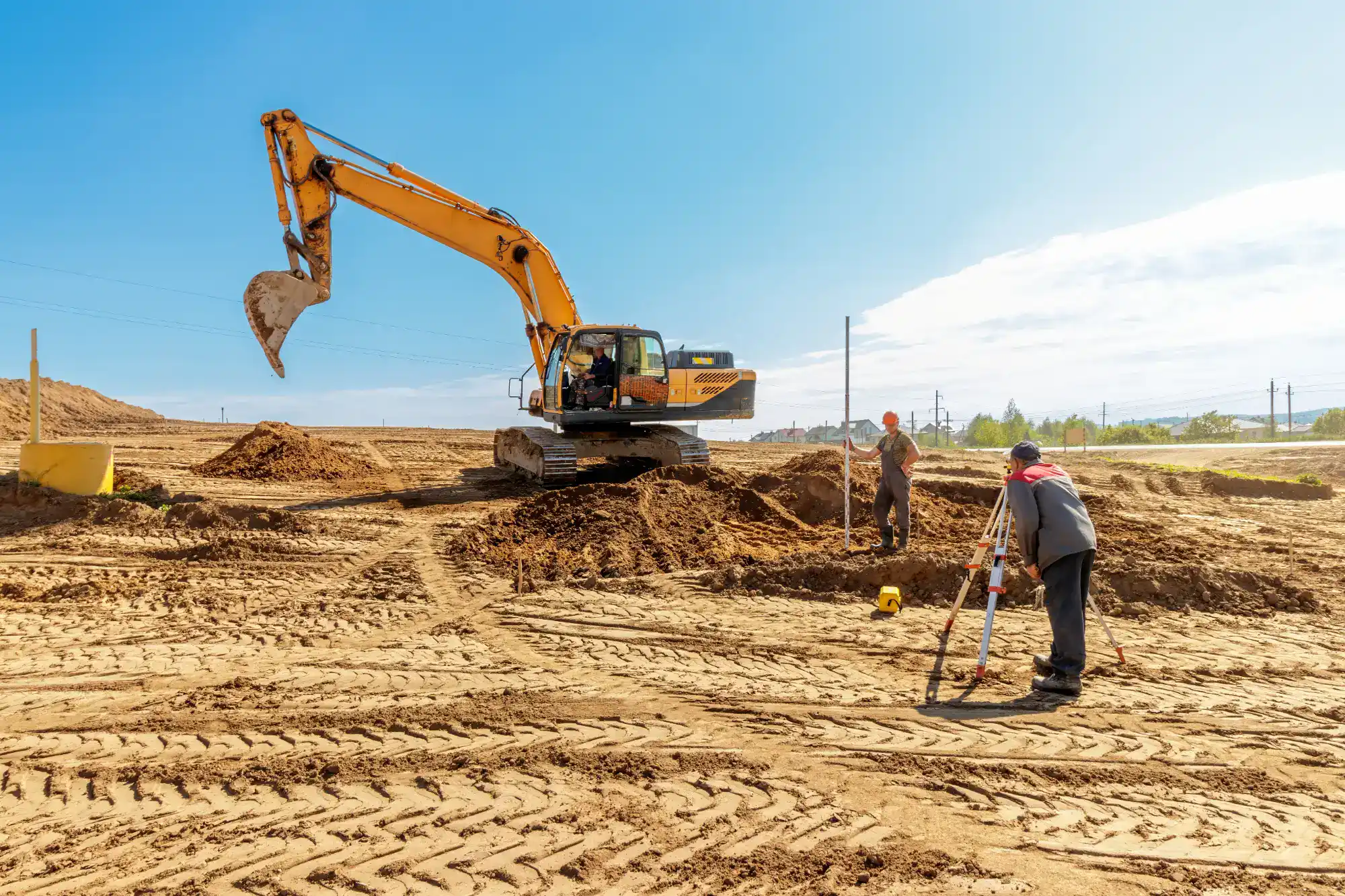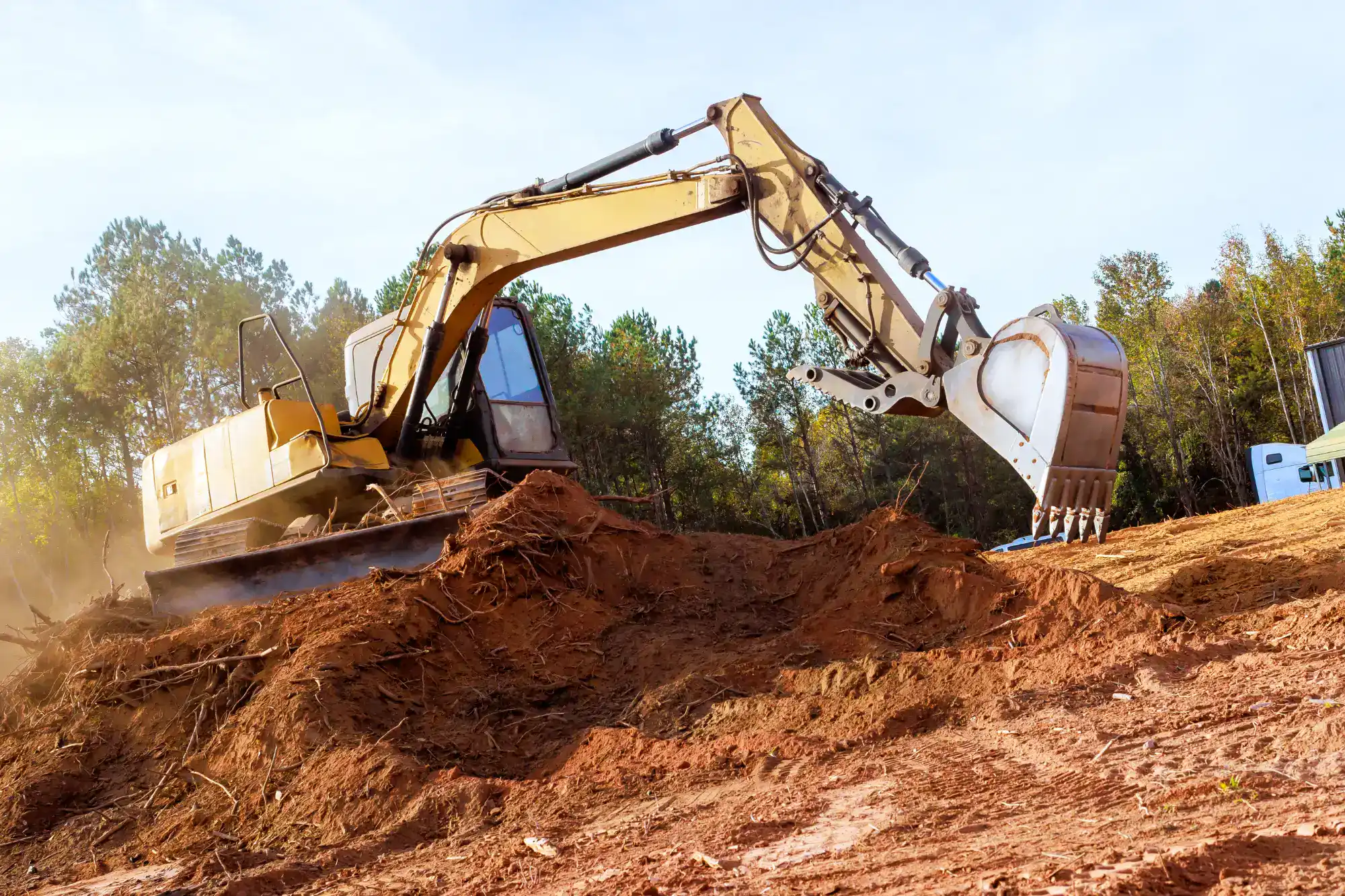Excavation projects can significantly impact local ecosystems, but responsible contractors use proven strategies to minimize environmental damage and ensure regulatory compliance.
Share:

Summary:
Excavation projects have the potential to negatively impact the environment without adequate planning, involving the removal of large amounts of earth that can lead to soil erosion, habitat destruction, and pollution. Excavation commonly creates runoff systems and holding ponds, allowing pollutants like dust and hazardous materials to contaminate air, soil, and water.
Construction sites involve extensive land clearing, which exposes bare ground to wind and water erosion, potentially resulting in fertile soil loss and increased sedimentation in nearby water bodies. These impacts aren’t just environmental concerns—they can become costly legal and regulatory issues for property owners who don’t work with experienced contractors.

Soil erosion occurs during excavation when water runoff, rain, or wind erodes the soil, turning stable areas dangerous where trenches can collapse and fertile topsoil can flush away. This isn’t just a surface problem. The effects ripple through the entire local ecosystem.
When eroded soil leaks into nearby rivers and streams, it creates water pollution, damages wildlife, leads to flooding, and generates stream channel damage. Sediment contamination has detrimental environmental effects in several ways.
The challenge for Saratoga County property owners is significant. Soil erosion can result in fertile topsoil loss and sediment release into water bodies, requiring sustainable excavation practices focused on erosion prevention and sediment control measures. Without proper planning, straightforward excavation projects quickly become environmental liabilities.
We understand that erosion and sedimentation control should be essential parts of any excavation project, with proper control plans helping prevent water pollution, wildlife damage, flooding, and stream channel damage. We don’t just dig and hope for the best. We implement comprehensive protection systems from day one.
Excavation activities often generate dust with adverse health effects on workers and nearby communities, making dust control measures essential for protecting human health and the environment. This isn’t just about comfort. It’s about regulatory compliance and community relations.
Excavation dust may contain harmful particles and pollutants, making dust management crucial for protecting air quality and health, requiring water suppression systems, covered areas, and minimized unnecessary excavation.
The reality is that construction machinery emits harmful air pollutants and greenhouse gases that negatively impact the environment, though low- and zero-emission construction machinery exists and increasing its use benefits air quality. We’re already adapting to these challenges in Saratoga County.
While some dust is inevitable during excavation projects, we can reduce production through water access and scheduling during damp conditions. The difference between amateur and professional excavation work often comes down to these details. We prevent dust problems rather than just reacting to them.
Want live answers?
Connect with a Emerson Excavating and Trucking expert for fast, friendly support.
For environmental protection, excavation practices must become more sustainable, with alternative approaches that are much more environmentally friendly than traditional methods. We don’t just follow minimum requirements. We implement comprehensive environmental protection strategies.
Before commencing excavation work, we conduct thorough site analysis including soil quality, water sources, vegetation, and wildlife habitats, allowing us to develop comprehensive plans that minimize ecosystem disturbance. This upfront planning investment saves money, time, and environmental damage down the road.

Soil erosion concerns during excavation require sustainable practices focused on erosion prevention and sediment control measures, including silt fences, sediment basins, and sediment ponds that capture and filter runoff water before it reaches natural water sources.
We understand that adequate drainage prevents run-off water from seeping into surrounding environments and forming on-site ponds, keeping eroded soil contained to prevent leakage into nearby rivers and streams. This isn’t just good practice. It’s often legally required.
We implement erosion control measures like retaining walls, sediment barriers, and silt fences, use erosion control blankets to stabilize exposed soil, and practice proper land grading to maintain natural drainage patterns.
As experienced excavating contractors in Saratoga County, we go beyond basic compliance. We implement effective erosion and sediment control measures including sediment barriers, ponds, and erosion control blankets, with proper water management protecting aquatic ecosystems and water quality. We’re thinking about long-term environmental health, not just immediate project completion.
Sustainable excavation includes recycling and reusing excavated materials, reducing the need for additional natural resources like gravel or sand, as excavated concrete, asphalt, and soil can be processed and reused in various construction projects.
Before leaving job sites, we survey excavated materials for reuse potential, as loose soil and sand work for other applications, clay can become sustainable concrete, and debris sometimes serves landscaping purposes.
We also address equipment-related environmental impacts. We consider alternative fuel sources when possible, using hybrid equipment to reduce carbon emissions, and when using diesel machinery, we minimize carbon emissions consciously. This means fewer trips between facilities and job sites, not running idle machinery, and ensuring our operators understand equipment’s environmental impact.
The difference between experienced environmental contractors versus basic excavation companies becomes clear in these details. We invest in environmentally-friendly equipment designed for sustainability, while also maintaining water access to keep dig sites wet or damp throughout excavation, preventing dust formation and spreading.
While excavation services are essential for construction and development projects, their environmental impact requires proactive steps to minimize soil erosion, protect habitats, manage waste responsibly, and restore sites post-excavation, with experienced and environmentally conscious providers making significant differences in sustainable practices.
Sustainable excavation practices are essential for environmental conservation, with companies able to minimize their environmental footprint and contribute to a healthier planet through reduced carbon emissions, preserved natural resources, promoted biodiversity, and ensured regulatory compliance.
When you’re ready to move forward with your excavation project in Saratoga County, the contractor you choose makes all the difference. Look for companies that demonstrate genuine environmental stewardship through comprehensive planning, advanced mitigation strategies, and transparent communication about their practices. At Emerson Excavating and Trucking, we understand that protecting your investment means protecting the environment—and we’re equipped to deliver both.
Article details:
Share:
Ready to Start Your Project Right?
Get a straightforward quote for your excavation, aggregate, or dumpster rental needs. No pressure, just honest answers and reliable service from local professionals who understand your area.
Emerson Excavating and Trucking
Company
Support
Useful Links